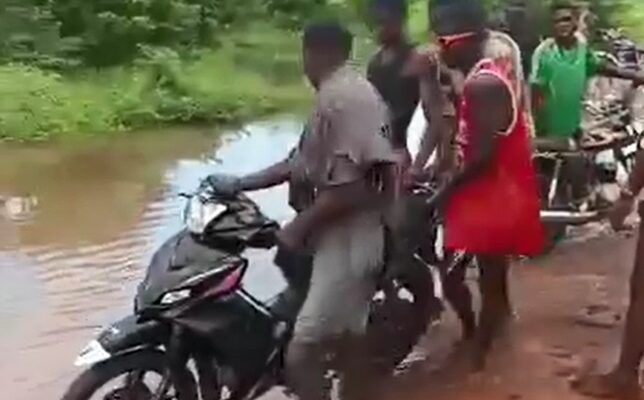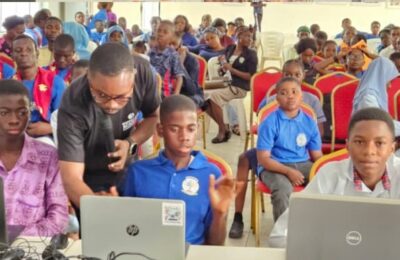The Idah–Nsukka road corridor, a critical link between Kogi and Enugu states, has long served farmers, traders, students at Federal Government College Ugwolawo, College of Health Sciences and Technology Idah, Federal Polytechnic Idah, the University of Nigeria Nsukka, and countless families. Awarded in the mid-1990s to shorten the Enugu–Abuja journey by more than two hours, this 90-kilometer route today stands as a stark emblem of neglect. Flooding, failing drainage and bridges, and rising kidnap and banditry threats along a route that should be safe are creating an escalating humanitarian and security emergency that requires urgent, coordinated action from all levels of government.
CURRENT REALITY ON THE GROUND
Flooded corridors and decaying infrastructure:
After heavy rains, key segments of the Idah–Nsukka axis—such as Abolinyangnyanga, Egabada, Oforachi, and other points—become impassable. Roads wash away, drainage systems overflow, bridges deteriorate or collapse, and water points become compromised. Passengers are sometimes carried on shoulders to cross flooded sections.
Security threats and insecurity:
Along stretches of the corridor, residents report a troubling rise in kidnappings and related crimes. The region has become a hotspot for kidnapping, making the route one of the most dangerous in Kogi State. Flood-driven displacement combined with fear disrupts schooling, commerce, and daily life, forcing businesses to close and families to seek precarious shelter. The popular Egabada market has become a shadow of itself.
Service-delivery bottlenecks:
Because authorities have neglected the road, primary health-care centers, schools, and water facilities along the route become hard to reach during floods, creating gaps in care, education, and sanitation. Local data and casualty figures remain fragmented, complicating timely response.
Cross-border governance gaps:
The Idah–Nsukka road crosses state boundaries and should benefit from seamless cooperation among Kogi State, Enugu State, and federal agencies. Fragmented coordination has slowed relief, repairs, and protective measures.
CAUSES
Climate and terrain: The corridor sits in flood-prone terrain with inadequate drainage and aging infrastructure unable to cope with heavy rainfall and rising river levels.
Maintenance and funding shortfalls: Routine maintenance has lagged; emergency and reconstruction funding has not matched the scale of needs. The Federal Ministry of Works and Housing has effectively turned a blind eye to this crucial road.
Security and protection gaps: A lack of a predictable, well-coordinated security presence in high-risk sections leaves communities vulnerable to crime during floods and displacement.
Coordination and accountability: Multiple agencies at federal and state levels operate with limited data sharing and joint planning, hindering rapid, transparent decision-making.
Economic vulnerability: Heavy reliance on rain-fed farming and fragile livelihoods increases exposure to flood damage and security shocks.
URGENT ACTION NEEDED
Declare and mobilize emergency response:
Officially designate the Idah–Nsukka corridor as disaster-affected and activate a multisector emergency plan led by state authorities with federal support where appropriate. Fast-track funding and procurement for relief, reconstruction, and protection.
Ensure rapid relief and civilian protection:
Establish secure relief centers with food, clean water, WASH, medical care, and psychosocial support; create safe corridors for aid delivery; deploy protective measures to shield civilians from kidnapping and violence.
Restore mobility and critical infrastructure:
Accelerate emergency repairs to roads, bridges, and drainage; speed up dredging and riverbank stabilization; ensure water supply and sanitation services function during floods.
Strengthen security and community protection:
Deploy coordinated security patrols along vulnerable routes; strengthen reporting channels and link with traditional authorities and civil society groups for early warnings and protective actions.
Data, coordination, and accountability:
Commission an immediate rapid needs assessment; form a joint federal–state task force with clear milestones; provide quarterly progress briefings and publish updates; establish an Idah–Nsukka Citizens’ Forum to ensure local voices inform decisions.
Build long-term resilience:
Develop a corridor-wide master plan for flood risk reduction, climate adaptation, and disaster-risk financing; diversify livelihoods beyond rain-fed farming; implement climate-resilient designs in all repairs and new works.
ROLES FOR GOVERNMENT AND PARTNERS
Kogi State: Lead the multisector response at the state level, coordinate with Enugu State authorities where cross-border issues arise, and manage relief logistics.
Enugu State (Nsukka area) and federal agencies: Support infrastructure repairs, flood defenses, drainage improvements, and cross-border coordination. Provide technical and funding backing where housing and public works intersect with flood resilience.
NEMA and security agencies: Participate in relief, protection, and service continuity; share data to inform decisions; help secure aid delivery and affected communities.
Local communities and civil society: Engage in planning, monitoring, and feedback to ensure interventions are culturally appropriate and trusted.
CONCLUSION
The abandoned Idah–Nsukka road is not merely a transportation ministry problem; it embodies climate vulnerability, governance gaps, and security risks that affect thousands of families, farmers, traders, and students. I urge the Kogi State Government and the Federal Ministry of Works and Housing, in partnership with Enugu State authorities and security agencies, to act with urgency: declare the corridor a disaster region, mobilize resources, repair and protect critical infrastructure, bolster civilian protection, and establish transparent mechanisms to monitor progress. The time to act is now—lives and livelihoods depend on it, as does the economic and social fabric of the communities that rely on this essential link.
– Comrade Opaluwa Eleojo Simeon writes from Lokoja.




